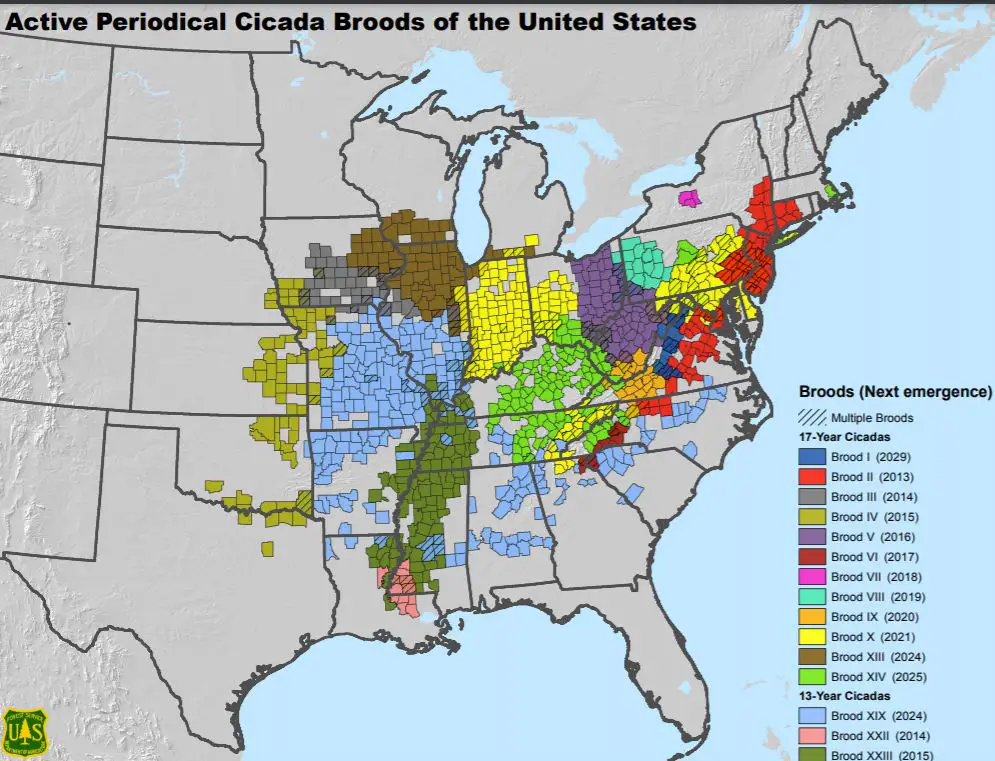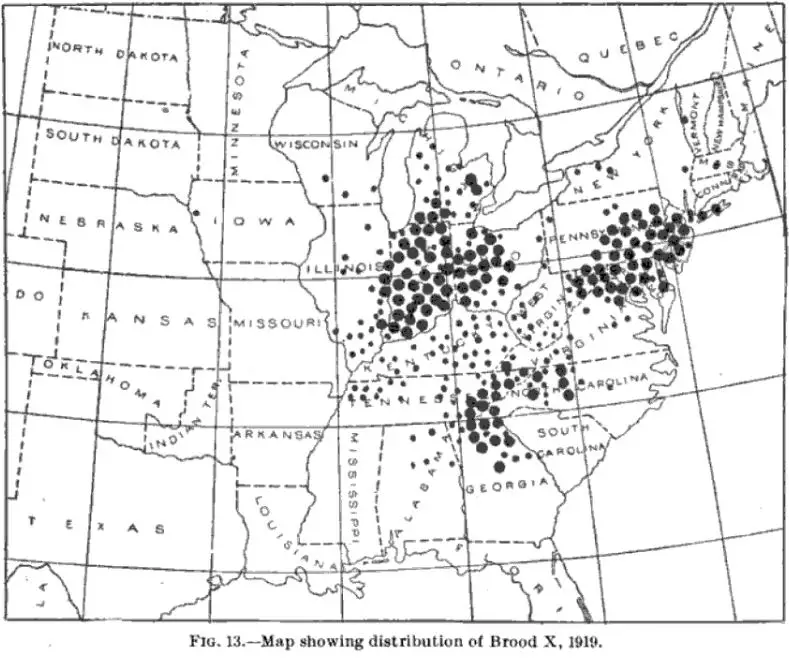Imagine not seeing daylight since 2004. That’s the life of a cicada. They live as larvae underground alongside billions of their species. This year, around late April, these noisy critters, part of a group named BroodX, will emerge in 15 states to sing their hearts out in the trees, looking for mates.

From mid to late April, these buzzing bugs will make their presence known in places like Michigan, Ohio, Washington DC, Delaware, Georgia, Illinois, Indiana, Kentucky, Maryland, New Jersey, New York, North Carolina, Pennsylvania, Tennessee, Virginia, and West Virginia. They usually emerge on the second or third day after daytime temperatures hit 80 degrees, which allows the soil temperatures a few inches underground to reach 64 degrees – the perfect condition for cicadas to surface.

The southern part of Michigan is expected to see the most of this emergence, but that doesn’t mean other areas won’t see some of BroodX. Older maps from the 1900s show patterns extending to the southern edge of the Thumb region, including places like Port Huron, Imlay City, Frankenmuth, and Owasso. A researcher in the early 1900s found that BroodX sightings can be found in many counties.
## The Cicada Song
Male cicadas have a unique ribbed organ called a tymbal. This membrane, when rubbed together, produces a high-pitched sound. One blogger from Indiana described the last emergence he endured as a kid in 1987. He said, “The noise never ended. Day. Night. Dawn. Dusk. It didn’t matter. Their “song” wasn’t a song at all, but an endless, atonal drone. The volume of the cicada’s tymbals has been measured as high as 106 decibels. It wasn’t a song. It was an insect’s horny, mindless bellow.”
## The Next Emergence of BroodX
After mating and laying eggs in the branches of trees, the cicadas die. The ones that hatch from those eggs this year will drop to the earth and burrow for 17 years. They’ll feed on the sap from the tree roots they were hatched on. Then they’ll wait 17 more years for a couple of perfect 80 degree days in Spring 2038 to begin the cycle again.
In short, the cicadas, part of a group named BroodX, will emerge in 15 states to sing their hearts out in the trees, looking for mates. They usually emerge on the second or third day after daytime temperatures hit 80 degrees. After mating and laying eggs in the branches of trees, the cicadas die. Then they’ll wait 17 more years for a couple of perfect 80 degree days in Spring 2038 to begin the cycle again.
#CicadaEmergence #BroodX
See the original post at [After 17 Years, Billions of Cicadas Called BroodX Are About to Make A Buzz](https://thumbwind.com/2021/03/31/cicada-broodx/)



